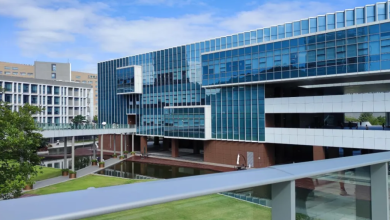
Futian District, Shenzhen: A Comprehensive Overview
Historical Background
Futian District, now the political and economic heart of Shenzhen, traces its roots back to the Ming and Qing Dynasties when it was part of the historical Xin’an County. Originally called “Futian Village,” its name symbolizes fertility and good fortune. Before China’s reform and opening-up in 1979, the area was primarily composed of farmland and fishing villages. After Shenzhen was designated a Special Economic Zone, Futian was incorporated into its development. Officially established as a district in 1990, Futian quickly evolved into the city’s administrative and financial center. Landmarks such as the Civic Center and Shenzhen Convention & Exhibition Center now define its skyline. Though covering less than 4% of Shenzhen’s land area, Futian contributes over 20% of the city’s GDP, a remarkable achievement. Historic sites like the ancient Xiasha Village remain preserved as symbols of the district’s transformation from agricultural roots to a global urban powerhouse.
Major Commercial Areas
Futian boasts the densest cluster of commercial zones in Shenzhen:
- Central Business District (CBD): Anchored by the Civic Center and crowned by the 599-meter Ping An Finance Center, this area hosts over 70% of Shenzhen’s licensed financial institutions. Its vibrant skyline is lit by nightly LED shows, a signature of the city.
- Huaqiangbei Commercial Zone: With over 500,000 daily visitors, this area has evolved from an electronics components hub into a diverse marketplace including beauty products and trendy gadgets. In 2023, the Huaqiangbei Metaverse Experience Hall opened, showcasing the zone’s digital innovation.
- Huanggang-Futian Port Zone: Leveraging 24-hour border clearance, this zone thrives with duty-free shops and Hong Kong-style eateries. Annual cross-border consumer spending here exceeds 10 billion RMB.
- Chegongmiao-Xiasha Zone: Formerly an industrial area, it has been redeveloped into a vibrant lifestyle destination, home to trendy restaurants like “Ten Mu Di,” attracting a young, urban crowd.
Leading Enterprises
Futian is home to more than 200 Global Fortune 500 companies and their branches:
- Financial Giants: Ping An Insurance (ranked 25th in the 2023 Fortune Global 500), China Merchants Bank (world’s largest retail bank by assets), and the Shenzhen Stock Exchange (ranked #1 globally for IPO volume in 2023) all have headquarters here.
- Tech Leaders: Tencent’s WeChat Pay headquarters and HONOR (a spin-off from Huawei) are based in Futian. The Shenzhen New Generation Industrial Park houses over 200 tech startups.
- Professional Services: PwC’s Shenzhen office and top law firm King & Wood Mallesons are located in the Kerry Plaza.
- Local Champions: Huaqiang Group’s “Huaqiang Electronics Network” went public on the ChiNext in 2022, while SEG Electronics Market maintains annual transactions exceeding 100 billion RMB.
Luxury Hotels and Accommodations
Futian hosts the highest concentration of luxury hotels in Shenzhen:
- The Ritz-Carlton Shenzhen sits beside the Convention Center, featuring a 1,200 sqm presidential suite and earning Forbes Travel Guide’s 5-star rating five years in a row.
- Four Seasons Hotel Shenzhen offers panoramic CBD views, with its “Zhuo Yue Xuan” Cantonese restaurant awarded one Michelin star in 2023.
- Hilton Shenzhen Futian is a top choice for government and international events, hosting over 300 conferences annually.
- Shangri-La Hotel Futian is seamlessly connected to Metro Line 1, with over 40% of guests coming from Hong Kong.
- The Langham Shenzhen is famous for its “Pink Afternoon Tea,” consistently topping Dianping’s trending lists. Mid-range chains like Atour and Ji Hotel cluster near port areas.
Cultural Landmarks and Public Facilities
Futian has developed a “10-minute cultural circle,” integrating heritage and innovation:
- Shenzhen Civic Center: Built with a 2-billion RMB investment, the roof spans the size of 30 football fields. Its nightly light show attracts over 6 million visitors annually.
- Shenzhen Library: Housing 5.39 million books, it ranks among China’s top libraries by annual visitor volume. The 24-hour study room is often fully booked.
- Lianhua Hill Park: With over 10 million yearly visitors, it is known for the Deng Xiaoping statue at the summit, a popular spot for floral tributes.
- Museum of Contemporary Art & Planning Exhibition: Designed by deconstructivist architect Coop Himmelb(l)au, it hosted the sold-out 2023 teamLab Future Park exhibition.
- Huaqiangbei Museum: This digital museum uses VR to recreate the history of Shenzhen’s electronics industry, making it a hotspot for educational tours
Transportation Hubs
Futian has the most extensive transportation network in Shenzhen:
- Metro System: Eight metro lines converge in Futian. The Futian Railway Station enables one-hour access to Guangzhou and 14-minute rides to Hong Kong West Kowloon.
- Futian High-Speed Railway Station: A three-level underground facility serving over 100,000 passengers daily. In 2023, a direct route to Zhuhai Chimelong Resort was added.
- Huanggang Port: China’s only 24-hour land border port processes over 70,000 daily commuters. A newly renovated joint inspection building will open in 2024.
- Road System: Shennan Avenue and Binhe Avenue run east-west across the district. Despite traffic congestion during rush hours (average speed: 25 km/h), bus lanes cover 30% of major routes.
Conclusion
Occupying just 3.8% of Shenzhen’s land area, Futian contributes an impressive 21.6% of the city’s GDP (2023 data), with a per-square-kilometer GDP of 5.78 billion RMB—even surpassing Hong Kong’s Central District. Here, one can attend cloud-level meetings at Ping An Finance Center, enjoy traditional Poon Choi feasts in Xiasha Village, or discover the latest gadgets in Huaqiangbei. As the “Engine of the Greater Bay Area,” Futian is advancing key projects like the Xiangmihu New Financial Center and the Hetao Shenzhen-Hong Kong Science and Technology Innovation Zone. By 2025, it aims to surpass 300 billion RMB in added value from the financial sector alone. Futian’s growth story reflects Shenzhen’s shift from speed to quality, serving as a model for modern urban development in China.





